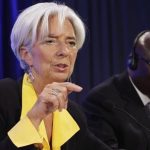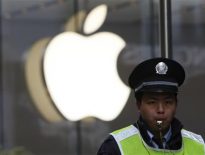(Reuters) – In the 1990s, Huawei CEO Ren Zhengfei visited the United States several times, hoping to
learn from its leaders of industry about how to turn his Chinese telecoms equipment maker into a global company. On one trip
in 1992, in the days before China had credit
cards, he paid all his bills with cash from a $30,000 stash in his briefcase.

pictured at the ITU Telecom World in Geneva October 24, 2011. REUTERS/Denis Balibouse
Sixteen years later, Ren was listed among
Forbes’ 400 richest Chinese and Huawei was one of the world’s largest telecoms gear vendors, but the United States still
treated him as an outsider. He was keen to win customers like AT&T, Verizon and Sprint but had secured just $200 million
of business in the U.S. in 2007 — in a $23 billion global market. Early that year, the United States effectively vetoed
Huawei’s bid for U.S. networking equipment manufacturer 3Com on security grounds.
In March 2008, according to a U.S.
cable leaked to WikiLeaks, Ren visited the U.S. consulate in Guangzhou to complain he was issued only a single-entry visa. He
was exasperated at U.S. suspicions that his company was close to the Chinese military and government. He pointed out that his
parents were sent to labor camps during China’s Cultural Revolution and the only reason he was allowed into the People’s
Liberation Army (PLA) was because they were short of skilled technicians.
While controversy over Ren’s supposedly
cosy links to China’s officialdom has dogged Huawei’s global expansion plans, his own story suggests the firm’s success is
largely down to a strong individualistic streak that pits Ren against the world.
Ren declined to be interviewed for
this article. However, he has written numerous letters and articles which have been shared with Huawei staff, and, in some
cases, with the public. Sources in the company have confirmed the authenticity of the material.
He certainly began
life as an outsider.
Born on October 25, 1944 to a rural family in a remote mountainous town in Guizhou province, as
the first of seven children, life was harsh. His parents were schoolteachers, and his mother often had to borrow money to
make ends meet, he wrote later in an article published in an internal magazine. “Until high school,” he wrote, “I never owned
a proper shirt.” His father fought for the nationalist Kuomintang against the Japanese in the 1930s, only later joining the
Communist Party. This and their “intellectualism” condemned both parents to labor camps during the Cultural
Revolution.
Ren graduated in 1963 from the Chongqing Institute of Civil Engineering and Architecture, and in 1974 the
PLA, strapped for engineers, overlooked his background and put him in the Engineering Corps. He later said he was excluded
from an inner circle. “I was unable to join the Communist Youth League when I was at college and failed to join the Communist
Party when I served in the army,” he wrote in a letter emailed to his staff late last year. “There was always adversity in my
life, and I became isolated.”
Despite this, Ren excelled. He rose to deputy director, the equivalent of deputy
regimental chief, and was invited in 1978 to the National Science Conference and, in 1982, to the National Congress of the
Communist Party of China. His army career ended with Deng Xiaoping’s cutbacks the following year.
Ren flitted through
various jobs, realizing his technical and scientific knowledge was being outpaced by rapid changes in technology. Armed with
21,000 yuan (now worth $3,300), he and some friends set up Huawei as a third-party re-seller of telecom devices in Shenzhen.
Ren pushed the company to quickly move up the value chain, emulating other companies’ products until, in the early 1990s,
Huawei was producing its own designs. In 1993, it introduced the C&C08, a digital telecoms switch which was both reliable
and much cheaper than other systems.
GUERRILLA TACTICS
Despite the perception that Ren profited from his PLA
connections, only a fraction of Huawei’s early contracts were from the military, according to Mike W. Peng, professor of
global strategy at the University of Texas at Dallas and author of a book on global business strategy. Instead, Huawei
battled its better-connected rivals by adopting a quasi-military strategy since eulogized as the ‘wolf spirit’. If
multinational corporations were elephants, Ren said at the time, Huawei was a mouse – so needed a keen nose and a strong
competitive instinct allied to a spirit of cooperation and sacrifice.
Ren outwitted his competitors by focusing on
rural areas, deploying sales people to win contracts there before moving into the towns and cities. He called these local
managers “guerrilla heads” and gave them great autonomy, but later admitted he had no great understanding of how to manage
them. But it worked.
Huawei won local and provincial telecoms contracts by agreeing to set up joint ventures, enabling
those authorities to recoup much of their investment through annual dividends. By 1996, Huawei had the second largest share
of China’s telecoms switches market. The following year Ren ventured abroad, targeting under-served markets in Africa and Russia, according to “Run of the Red Queen”,
a study of Chinese economic expansion by academics Dan Breznitz and Michael Murphree. In most cases Huawei offered soft loans
to cash-strapped developing world carriers. In 2004, for example, Huawei used a $10 billion credit line from China
Development Bank to offer loans, undercutting rivals’ bids by as much as 70 percent, according to a paper written by JETRO,
a Japanese trade organization.
Ren pushed his workers hard, particularly in research and development. Citing Siemens
data, Peng wrote that European R&D workers work about 1,400 hours a year, while Huawei’s Chinese R&D workers put in
twice that – at as little as a sixth of the cost. Huawei became known for its “mattress culture”, where engineers would put
in long hours and sleep in the office.
Annual sales rose tenfold between 1995, when it served only China’s rural
markets, to $2 billion in 2000. But, to Ren, Huawei’s future remained precarious.
He had promoted Li Yinan, a bright
young optical engineer nearly 30 years his junior, to vice president, only to see him leave in 2000 to set up a rival
company. By then the dot.com bubble was beginning to burst, and with it the boom years of investment in telecoms driven by a
wave of deregulation.
Ren was facing his own personal demons, too.
On January 8, 2001, while on a trip to Iran with then Vice President Hu Jintao, his
mother was hit by a car when out buying cabbage. A six-hour layover in Bahrain, a storm and a missed connection in Bangkok
delayed Ren’s arrival at her bedside. By then, according to an article by Ren published in an internal magazine and whose
authenticity has been confirmed by sources within Huawei, she was on life support. He blamed himself. Had he phoned her
before boarding the plane, he wrote later, she may have left the house later and lived.
“HUAWEI’S WINTER”
The
following month he wrote another article, entitled “Huawei’s Winter”, in which he warned against complacency in the company,
which he said could trigger bankruptcy in the face of a coming crisis in the telecoms sector. “It is spring now, but that
means winter is not too far away, so we will have to ponder about the problems in winter during spring and summer.” Huawei,
he said, must prepare itself. “One will freeze to death without any premonition or preventive measures,” he warned. “When
that happens, whoever has a woolen jacket will survive.”
To protect Huawei he sold off a California subsidiary,
Avansys Power Co, to Emerson Electric for $750 million. Shaun Liu, an IBM consultant to Huawei who had just started working
out of the company’s Shenzhen headquarters, recalled how Ren often asked his employees to be prepared for the
crisis.
Behind the scenes, all was not well. With the company expanding rapidly, it was unable to absorb new hires,
causing chaos. Ren was trying to run the company himself, working long days, his suit wrinkled, as problems stacked up on his
desk. For six months he had nightmares and would wake up crying.
The IBM consultants made him realize how much needed
to be done to transform the company. Ren later wrote he recognized the company had no viable long-term strategy and sorely
lacked organizational expertise. The consultants told him the future was in R&D and services, not manufacturing, but
Huawei must shed its image of being cheap.
Between 2000-2003 Ren “became fatigued,” he wrote last year, “collapsed,
suffered from many diseases and had cancer surgery twice.” In 2002, he wrote “Huawei was on the verge of
collapse.”
From the outside, though, it didn’t look that way: while telecom infrastructure investment around the
world shrank, Huawei’s international revenue grew to $552 million in 2002 from $328 million in 2001. It now had a foothold
in 40 countries.
SUICIDES AND DEPRESSION
IBM’s emphasis on quality service — coupled with Ren’s insistence on
worker dedication — created a workforce pushed to its limits. Huawei’s former head of operations in Africa, Wilson Yang,
recalled for a case study by the University of Pennsylvania’s Wharton School how customers knew they could call a Huawei
technician 24 hours a day, seven days a week. A sales manager, quoted by Jie Xiong of France’s EMLYON Business School in a
letter written in 2011, said he would often celebrate Christmas with colleagues while fixing a client’s server. “Christmas,”
he said, “is not our holiday.”
In late 2007, Huawei asked 7,000 employees to resign so they could be re-hired on
short-term contracts that were not subject to China’s Labour Contract Law, according to Hong Kong’s China Legal Bulletin.
Worse: The mattress culture was apparently contributing to a spate of suicides. A baffled Ren wrote to a senior member of the
Communist Party, according to the Xinmin Weekly, asking what to do. “What can we do to help our employees have a more
positive and open attitude towards life?,” the paper quoted him as writing. As an outsider, he was sympathetic — “I used to
have serious depression and anxiety disorder,” he wrote in a missive to staff, “but with the help of doctors, along with my
own optimism, my illness is completely cured.”
As Huawei has grown, so has concern over its future.
Reports in
Chinese media about boardroom battles in 2010 suggested Ren was planning to hand over to one of his sons — a rumor Huawei
denied. These, and questions about Ren’s PLA connections, have forced the company to be more open, last year publishing for
the first time a list and biographies of the people who run the company. This only partially dampened talk of a family-run
business. It showed Meng Wanzhou, Ren’s daughter, was chief financial officer. Ren’s younger brother, Ren Shulu, was
appointed to the supervisory board in January 2011.
At the end of last year Ren gave some insight into the structure
in place at Huawei, explaining a system in which eight executives took turns as chairman for six months. It was this system,
he said, which prevented any one division or figure from becoming too dominant, or, as he put it, “internal hilltops had been
unconsciously leveled.”
SMART GUY WITH A VISION
Ren remains an aloof, enigmatic figure, even to the 40,000
workers at Huawei’s headquarters. There are few photos of him on the walls, and for most their only contact with him has
been via his missives, laden with flowery historical references, which arrive by email and prompt as much amusement as
reverence. “He’s a very smart guy who has a vision,” one staff member said. “He sees it as his challenge to make his staff
see his vision, so he spends a lot of time motivating people.”
An industry source who met Ren earlier this year
recalled that he looked pale, with a nurse popping in to check his blood pressure.
Ren’s vision remains one of
impermanence.
In early February, Huawei’s internal communications team produced a copy of their Huawei People
magazine emblazoned with a sunset photo of an estuary, headlined “The Spring River Flows East”. Inside, Ren’s 2011 letter
was carried in English in full, complete with explanatory footnotes, where he warns of coming catastrophe when “an economic
bubble caused by excessive leverage will ultimately burst.”
He concludes: “Tides rise and fall in the sweep of history
and the spring river flows east, into the Pacific Ocean, into the Indian Ocean, and will never return …”
Around the
time he was writing that, Australia
was preparing to block Huawei from bidding on the country’s $39 billion national broadband network, one of the largest t





